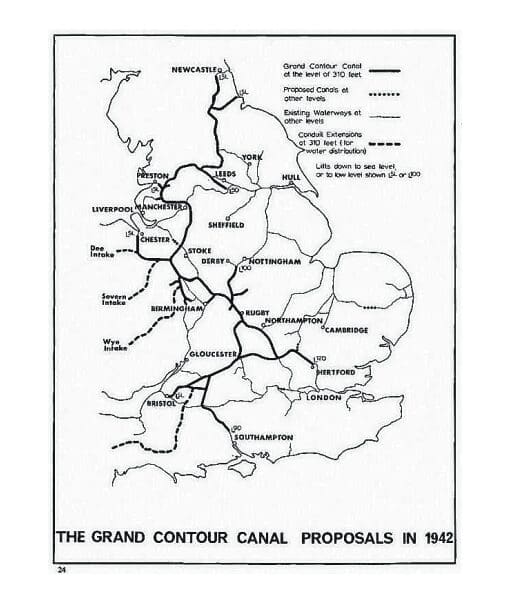Jonathan Mosse continues his monthly look at freight developments on the inland waterways.
I’M BOTH intrigued that Boris has unwittingly stolen my thunder and dismayed in equal measure that he might, by association, have devalued my message. But, on balance, I feel there’s nothing for it but to press on!

We’ve recently viewed the burgeoning ‘last mile’ developments on the tidal Thames driven, as much as anything, by congestion rather than any immediate environmental considerations. Lack of space prevented the inclusion of a look at the bigger picture, which is how our erstwhile prime minister managed to get a look in this time round!
Moving water from the wet west to the arid, populous east of the country is already under serious consideration and one of the potential beneficiaries is the Cotswold Canals Trust in that a restored Thames & Severn Canal could perform the task admirably, resulting in a win-win situation for both boaters and thirsty Londoners alike.
Now, into the spotlight comes the transfer of water from the North East (and even Scotland) to the Home Counties, although largely overlooking its use as an eminently viable mode of transport. This is a possibility that JF Pownall identified back in 1942 and examined in depth in his treatise The Projected Grand Contour Canal.
Pownall was inspired by John Saner’s (the engineer responsible for maintaining the Anderton Lift in 1908 when it was electrified) 1905 paper On Waterways in Great Britain, written with the purpose of regenerating interest in Britain’s waterways.
By this point the railways had reduced the cost of transport to the barest minimum and Saner set out to explore the possibility that a reinvigorated canal system could reduce costs even further.
Also known as the Three-hundred-foot Canal the proposal (now almost 80 years old) was for a spinal waterway, running the length of England – 100ft wide, 17ft deep and with 25ft headroom – able to carry 1500-ton barges. Actually sitting on the 310ft contour, it connected all the country’s main conurbations and, with a few cleverly contrived branches, managed to tie in the existing inland waterways of any significance, all linked via a totally lock-free system, requiring the minimal use of tunnels.
Waterway vision
Pownall noted that many of the significant canal builders had already made substantial use of this contour by constructing significant lengths of their individual navigations at this level, or within 20 feet of it. However, canal company thinking in the heady days of canal mania had been relatively parochial and what was clearly lacking was a nationwide, HS2-scale, waterway vision.
In his treatise, Pownall goes into great detail as to why this contour is so prevalent throughout the UK, quoting erosion to coals alongside an analysis of different geological strata, backed up by an examination of subsequent rates of erosion.
The major challenge lay not in its construction, but in efficiently connecting it with the major ports at sea-level. Obviously not a water transfer issue, it nevertheless requires an elegant engineering solution and, casting around the world’s canals today, there are clearly several candidates to choose from.
For those who wish to delve deeper into the potential of this concept, it is well worth watching the comprehensive coverage of the idea at https://www.youtube.com/watch?v=BMCicCN_x0s which not only rehearses the well-worn arguments in favour of the inland waterways as freight-carrying arteries – as well as demonstrating how Pownall’s concept neatly overcomes their shortcomings – but also ably develops the concept within the industrial framework of the 21st century.
In essence it’s all a matter of context. Set against the imperative of climate change and the impending catastrophe of global warming the idea suddenly takes on an attractive form, whereas in the heyday of unrestrained fossil fuel burning, it could easily be construed as the imaginings of a lunatic. As with any radical concept, context is king.
As Patrick Moss – waterways authority and chair of the Somerset Coal Canal Society – acutely observed (painting a backdrop to developing inland waterways freight) ‘… consultants compliant with the road lobby are the biggest problem. I often only get to see the investigations after the event, and even though we can pick holes in the research, by then it’s a done deal between a developer who never wanted water transport and an authority who didn’t understand it’.
This is, in reality, simply an extension of the old saying ‘we see things as we are and not as they are’. It is to be hoped that the vigorous lobbying activity currently being undertaken by GPS Marine will finally succeed in bucking this trend.
#freight #towpathtalk





